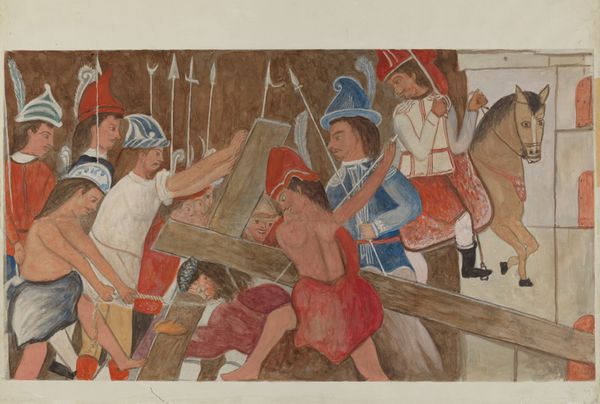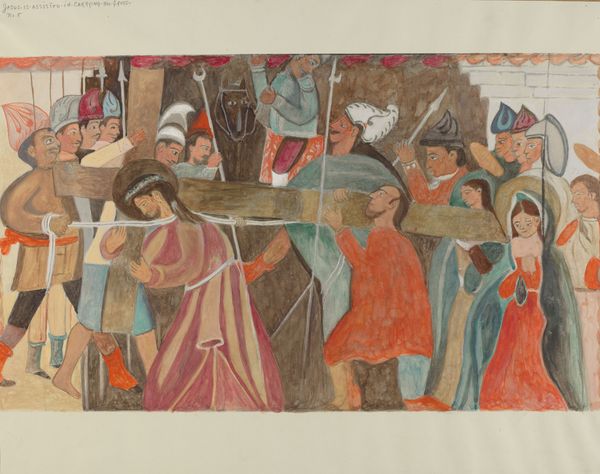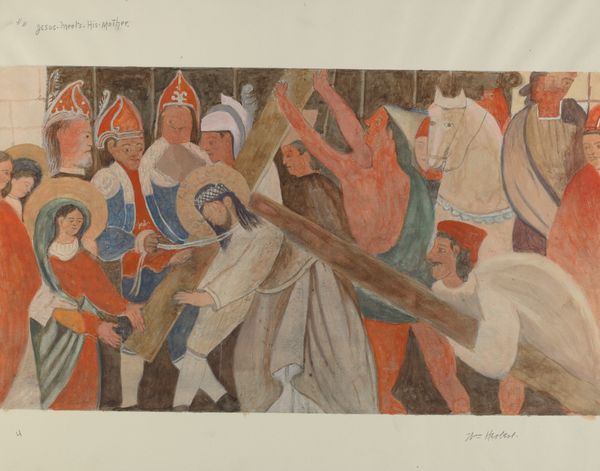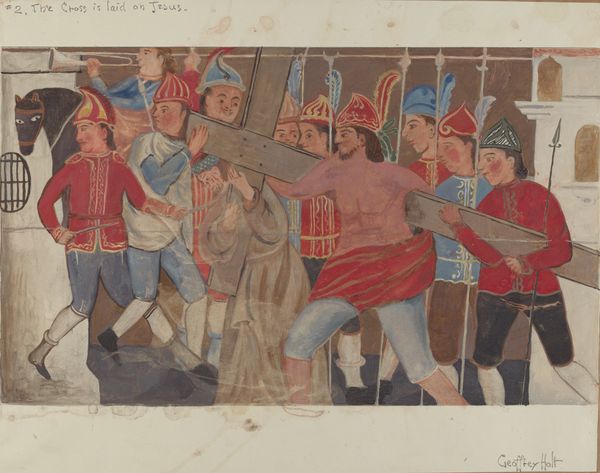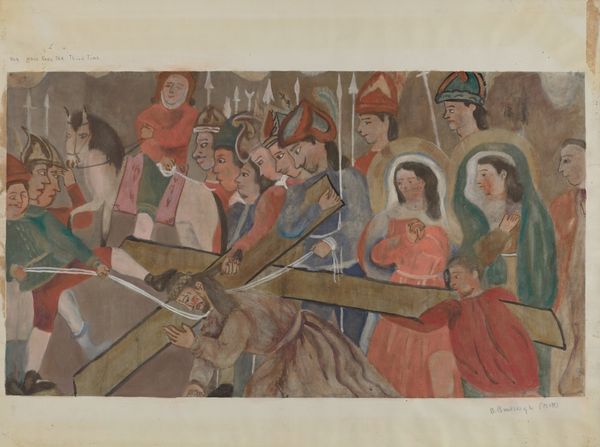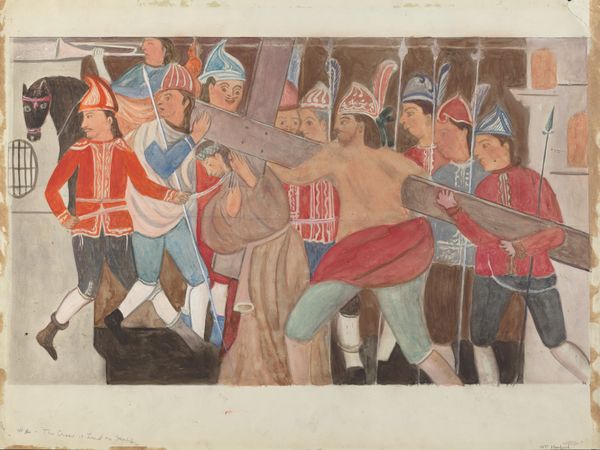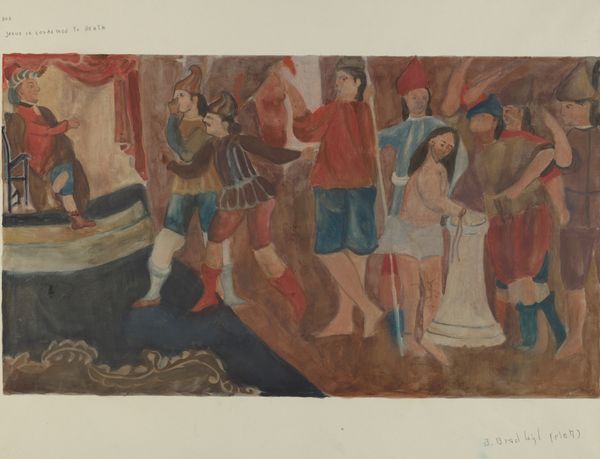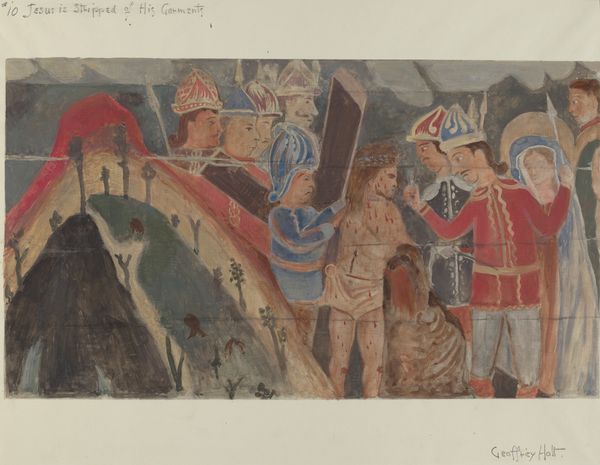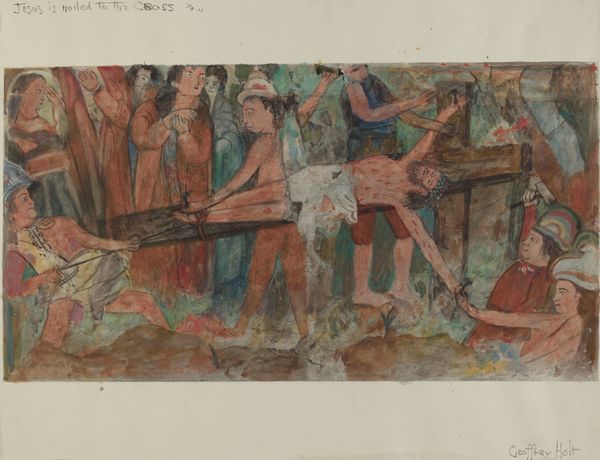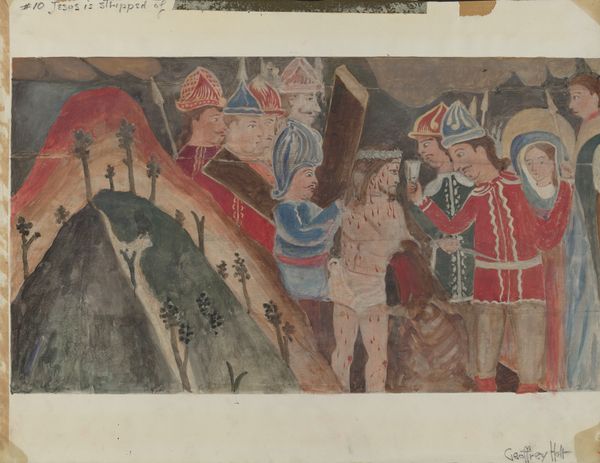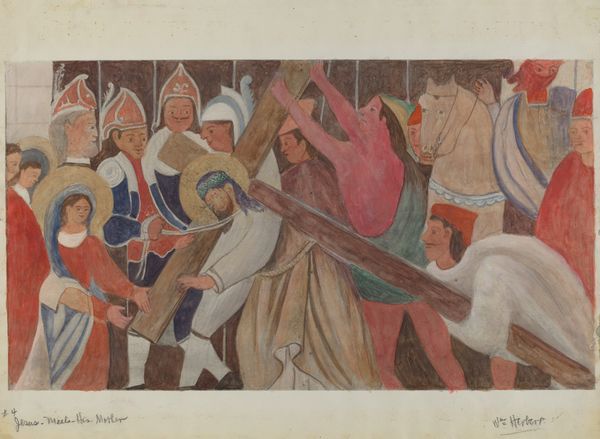
Station of the Cross No. 3: "Jesus Falls the First Time" c. 1936
0:00
0:00
drawing, tempera, watercolor
#
drawing
#
medieval
#
water colours
#
narrative-art
#
tempera
#
figuration
#
watercolor
#
coloured pencil
#
history-painting
#
academic-art
Dimensions: overall: 42.9 x 55.2 cm (16 7/8 x 21 3/4 in.) Original IAD Object: approximately 30 x 50 in.
Copyright: National Gallery of Art: CC0 1.0
Curator: Welcome. We’re looking at William Herbert’s circa 1936 piece, "Station of the Cross No. 3: 'Jesus Falls the First Time'," a tempera and watercolor rendering. What’s your immediate take on this work? Editor: Stark. It’s the palette. Browns, reds, and blues, coupled with that intentionally crude drawing style. It makes the piece feel weighty, primitive almost. Like a rediscovered fresco fragment. Curator: Indeed. Consider how the figures are arranged: a compressed, frieze-like composition across the pictorial plane. Observe, too, how the orthogonal lines of the cross create a dynamic yet stable structure, anchoring the central event. It invites structuralist readings on visual power and semiotics, wouldn’t you say? Editor: Absolutely, but more than power structures, it's an image steeped in cultural suffering. That rough, raw handling of the paint and those expressive figures really tap into centuries of inherited religious memory—the iconography of pain is hard to ignore here. Curator: Perhaps, though focusing on iconographic intent alone limits interpretation. Look closer at how Herbert balances the formal elements—the rhythmic repetition of the spear shafts, the color harmonies, it seems that academic-art strongly influence Herbert's choice of visual vocabularies here. Editor: Fair, but consider what Herbert does with that academic tradition. The angularity in his figures feels deliberate, lending an almost medieval rawness. It echoes earlier depictions of the Passion and brings the viewer in contact with that past in ways beyond mere form. There's cultural and psychological weight to it all. Curator: Undeniably, it generates considerable energy. To revisit the formal structure of this artwork, I'm compelled by the lack of clear definition in figure interactions with negative spaces around figures and structural support within an area that conveys, on an initial viewing, anything other than disorder and potential loss. Editor: Which amplifies that initial feeling of starkness. Herbert distills a profound, continuous story through iconic representations, a kind of historical empathy visually rendered for each viewer across all the coming times. It’s both a moment captured and an echo reverberating, right? Curator: Quite. The formal analysis offers a scaffold, yes, but the human experience gives this piece meaning across the centuries. Thank you. Editor: Likewise. It’s an image that burrows deep through form and history, definitely, creating resonating reflections.
Comments
No comments
Be the first to comment and join the conversation on the ultimate creative platform.
